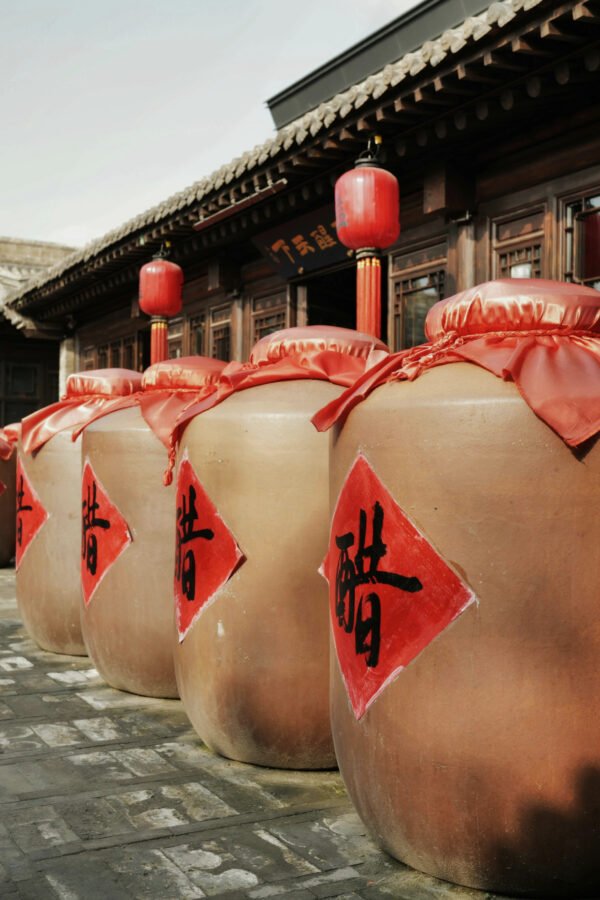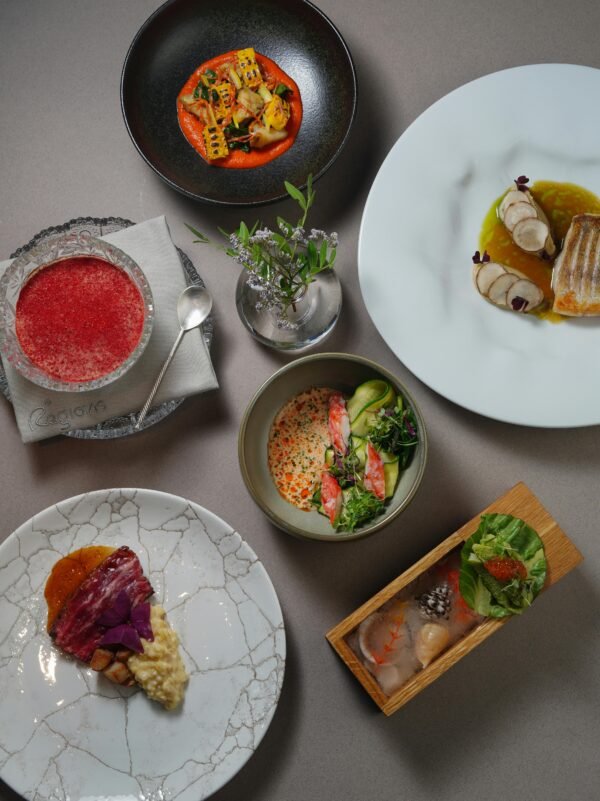No products in the cart.
Culinary Arts & Architecture: The Design of Historic Kitchens
The kitchen is more than a place to prepare food—it is a living testament to cultural evolution, architectural ingenuity, and the shifting rhythms of daily life.
Across centuries, these spaces have reflected the values, technologies, and social structures of their time, transforming from rudimentary hearths to grand culinary theaters.
From the open-air courtyards of ancient civilizations to the intricate, polished kitchens of European châteaus, kitchen design has always been where function meets artistry. The evolution of these spaces tells the story of human creativity, culinary tradition, and the ever-changing relationship between food, technology, and society.
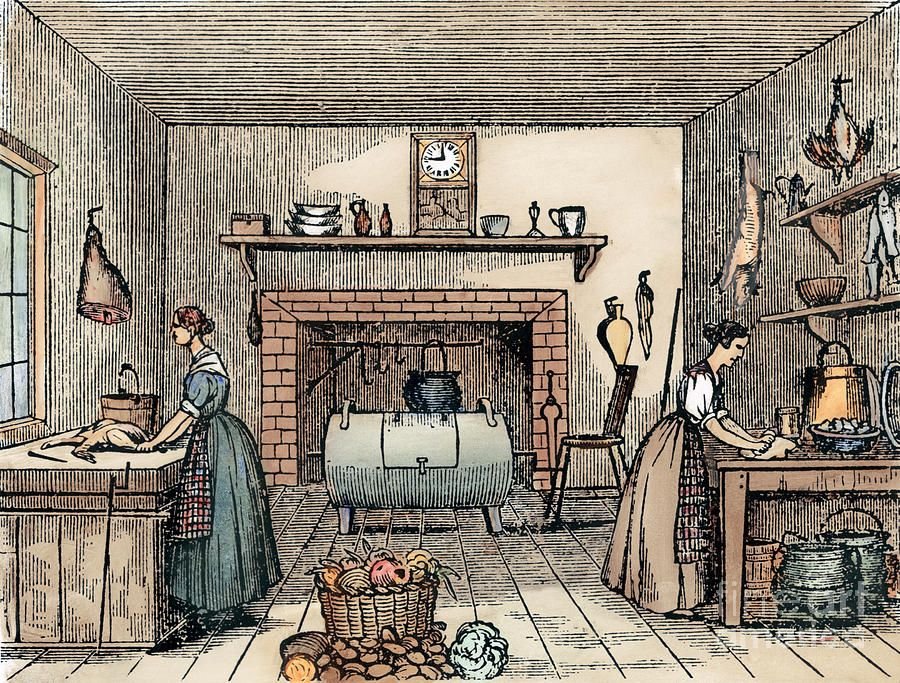
Mrs. Howland’s Cookbook: A Staple of 19th-Century New England Kitchens – Esther Allen Howland’s “The New England Economical Housekeeper and Family Receipt Book” (1847) provided practical recipes and household advice, reflecting the domestic life and culinary practices of 19th-century New England.
At Palette Synthi™, we celebrate the rich legacy of kitchen architecture—examining how the spaces where we cook, gather, and create have shaped cultures throughout history.
Ancient Kitchens: Innovation and Ritual at the Hearth
Even the earliest kitchens were more than functional—they were centers of ritual, ingenuity, and communal life.
Egypt: Open-Air Ovens & Sacred Breadmaking
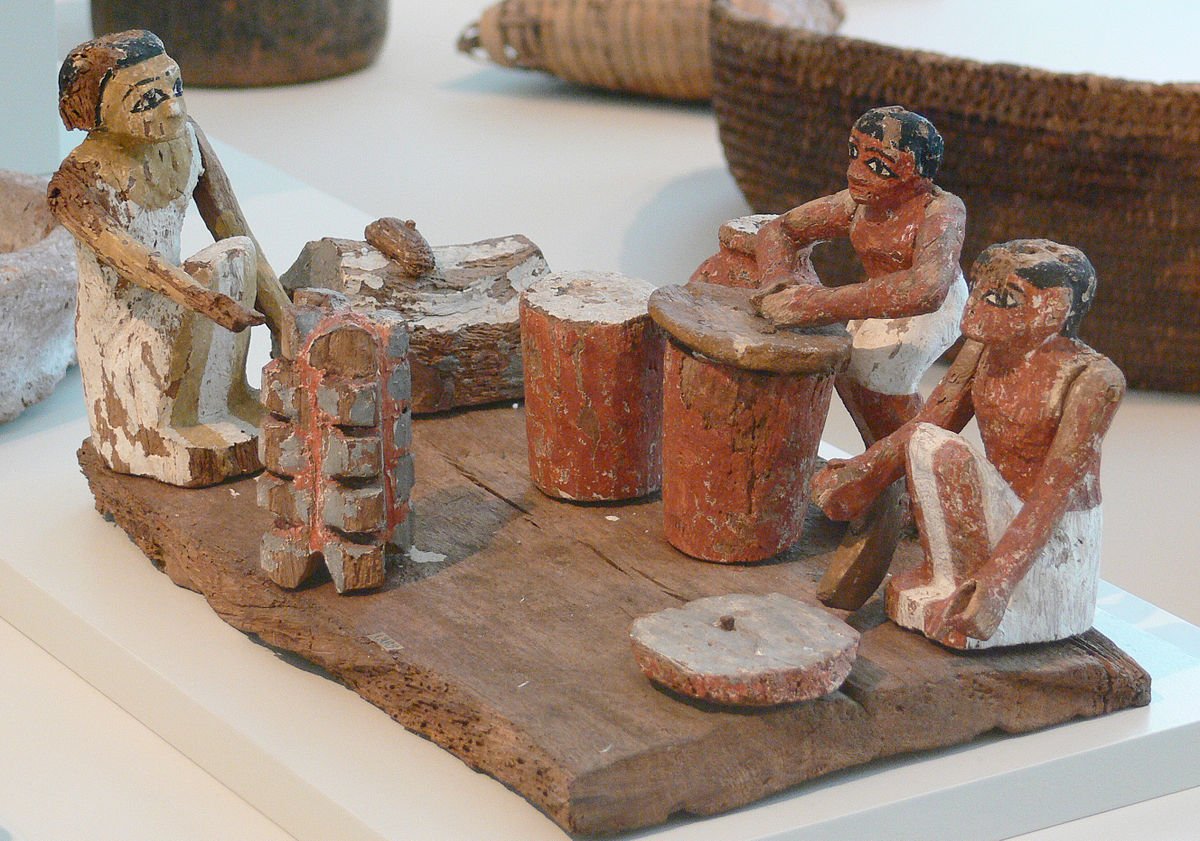
Ancient Egyptian Kitchen Model – A wooden model from the 12th Dynasty (2050-1800 BC) depicting workers grinding grain, baking, and brewing, illustrating the central role of food preparation in ancient Egyptian daily life.
Picture an ancient Egyptian courtyard bathed in sunlight, where mud-brick ovens glow with residual heat. Bread-making was a daily ritual, a sacred process involving stone-ground grains, hand-kneaded dough, and slow baking in domed kilns. These open-air kitchens, designed to dissipate heat and smoke, showcase one of the earliest examples of thoughtful kitchen architecture.
Rome: Culinary Sophistication & Engineering Marvels
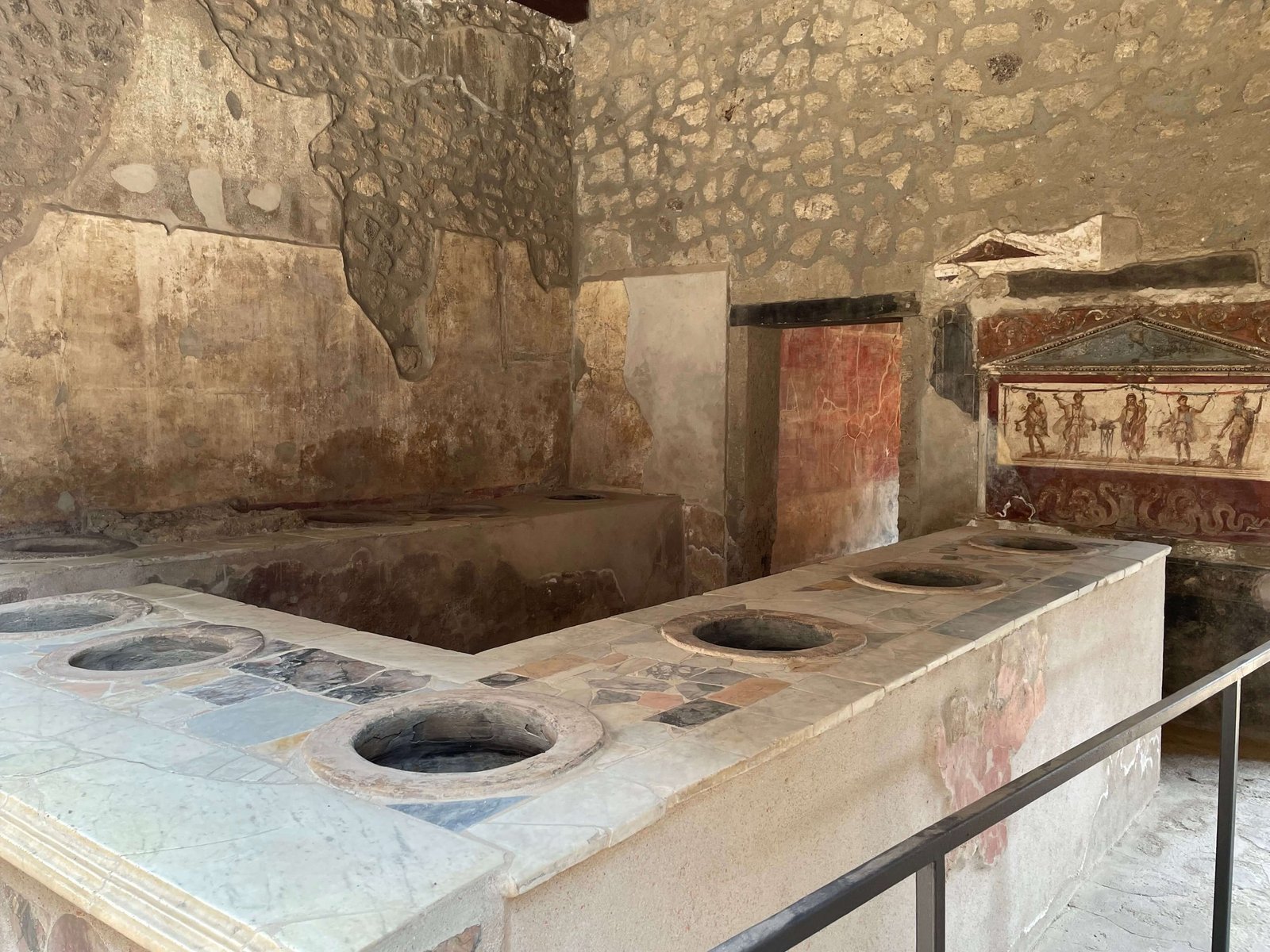
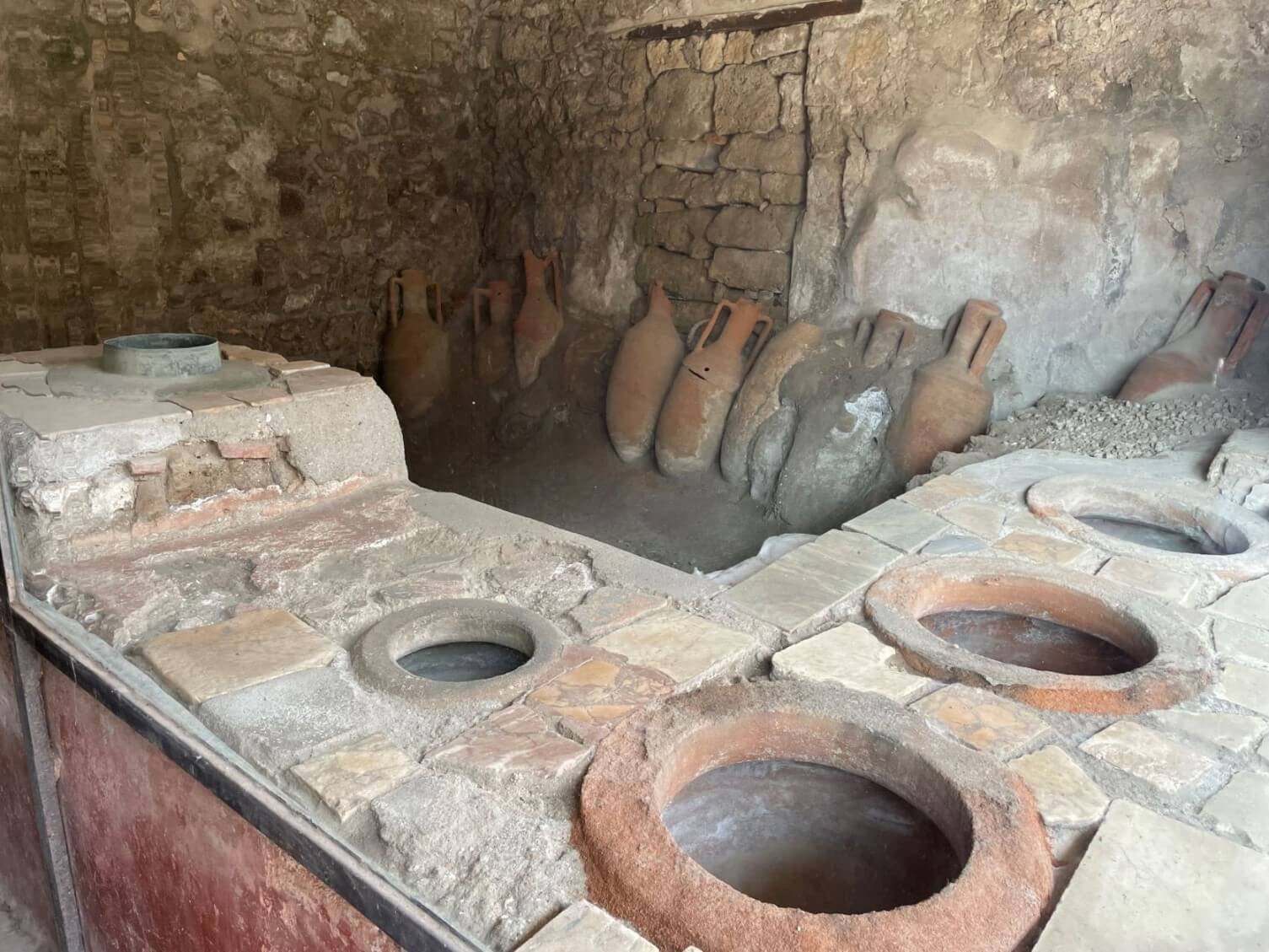
(1) Thermopolium of Vetutius Placidus, Pompeii – Another remarkable example of an ancient Roman thermopolium, this establishment includes a well-preserved counter with storage jars for serving food and drinks. A fresco at the rear depicts protective household deities, revealing the intersection of daily life, commerce, and religious practices in Pompeii’s bustling streets before the disaster of AD 79.
(2) Thermopolium of Asellina, Pompeii – One of the best-preserved ancient Roman eateries, the Thermopolium of Asellina served hot meals and drinks to Pompeii’s working class. Featuring a long L-shaped counter with embedded dolia (storage jars) for food, this establishment provides insight into the fast-food culture of ancient Rome before Mount Vesuvius’ eruption in AD 79.
Step inside a Roman culina, where terracotta tiles gleam and bronze cookware lines the walls. Smoke vents through early chimney flues, while servants prepare lavish feasts over open flames. Some affluent homes even had running water, a testament to Rome’s advanced engineering.
💡 Roman kitchens were status symbols as much as workspaces—merging culinary ambition with architectural sophistication.
Medieval Kitchens: The Hearth as a Symbol of Power
By the medieval era, kitchens were no longer hidden corners of the home. They were expansive, dramatic, and central to grand feasts.
The Castle Kitchen: A Stage for Culinary Spectacle
Imagine the roaring hearth of a medieval great hall, its towering stone walls blackened with years of smoke. Whole animals turn on enormous spits while bubbling cauldrons release the aromas of rich stews. High-arched ceilings channel smoke upwards, making these spaces both functional and imposing.
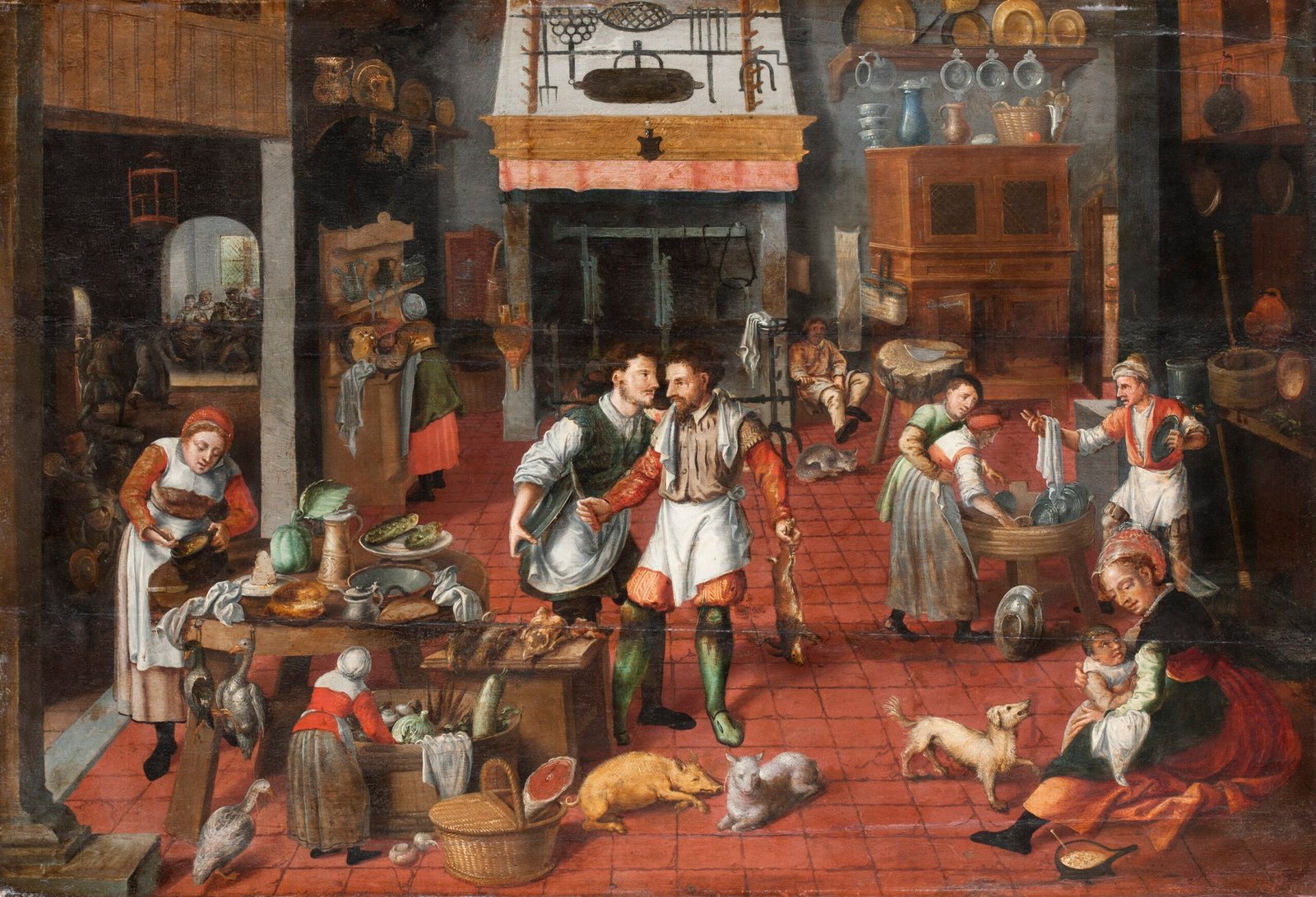
Kitchen Interior – Skokloster Castle – This genre painting depicts a bustling 16th-century kitchen scene, highlighting the central role of the hearth, the use of copper cookware, and the communal aspects of meal preparation during that era.
💡 Medieval kitchens weren’t just places of sustenance—they were expressions of power and prestige, designed for both efficiency and theatrical display.
Renaissance & Baroque Eras: Kitchens as Art and Status
With the Renaissance came a shift: kitchens became more refined, reflecting the growing importance of culinary spaces in elite society.
European Grandeur: The Kitchen as a Masterpiece
In the kitchens of French châteaux, gleaming copper pots hang from stone walls, and fireplaces large enough to roast whole animals anchor the space. Polished stone countertops and decorative tile work hint at the increasing value placed on both aesthetics and function.
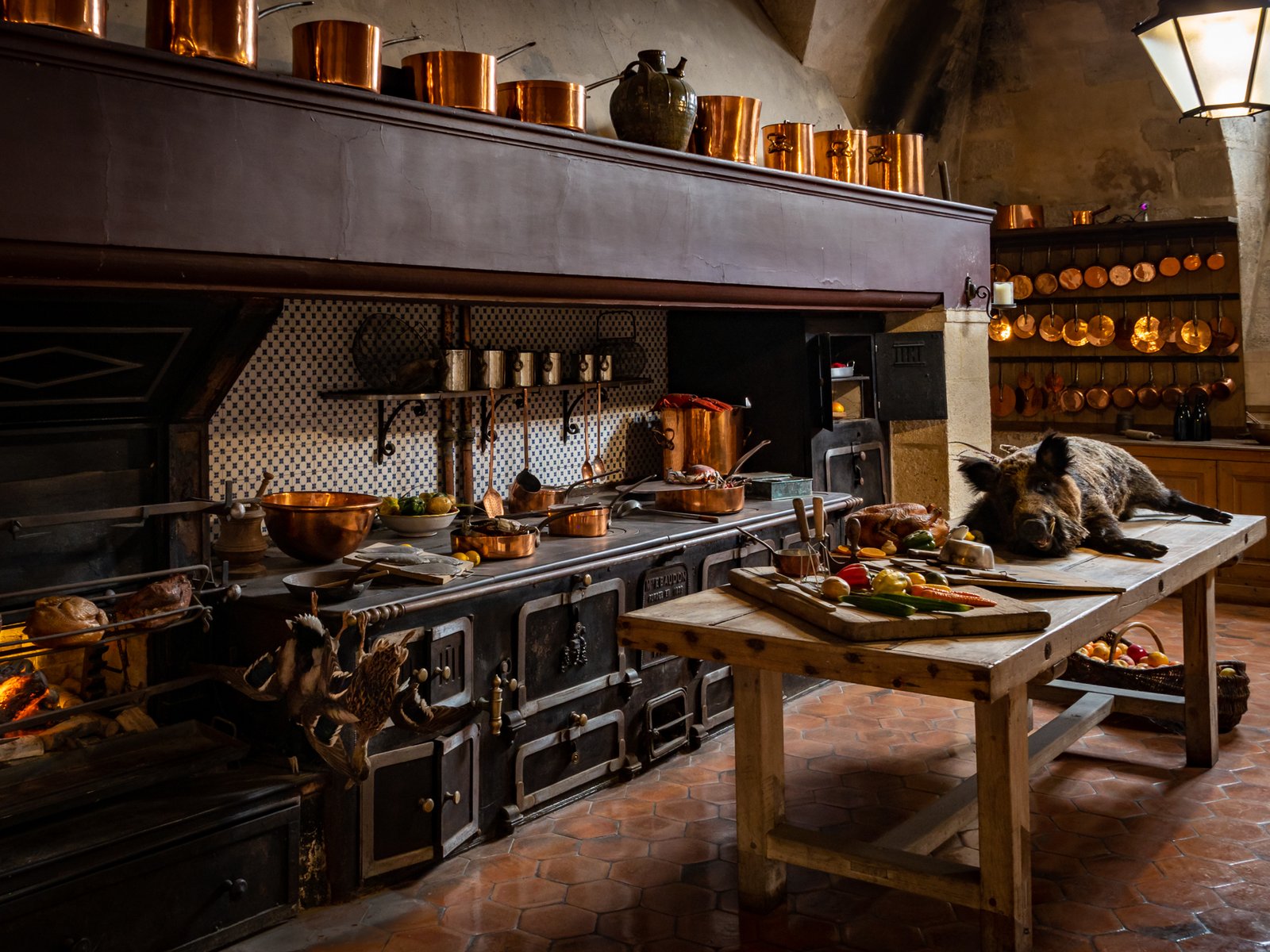
Kitchen at Château de Vaux-le-Vicomte – Constructed between 1658 and 1661 for Nicolas Fouquet, Superintendent of Finances under Louis XIV, the Château de Vaux-le-Vicomte’s kitchen exemplifies grand 17th-century French culinary architecture. The expansive space features a large stone hearth, copper cookware, and intricate masonry, reflecting the opulence that ultimately led to Fouquet’s downfall when the king perceived the château’s grandeur as a personal affront.
💡 Kitchens evolved into showcases of wealth, mirroring the sophistication of the noble estates they served.
The Industrial Revolution: The Birth of the Modern Kitchen
The 19th century ushered in an era of rapid change, with kitchens becoming more efficient, hygienic, and accessible.
A New Era of Efficiency
Now, imagine a Victorian-era kitchen—gleaming cast-iron stoves, polished brass fixtures, and the hum of early plumbing systems. Iceboxes revolutionized food storage, while compact layouts reflected an increasing emphasis on efficiency.

Harewood House
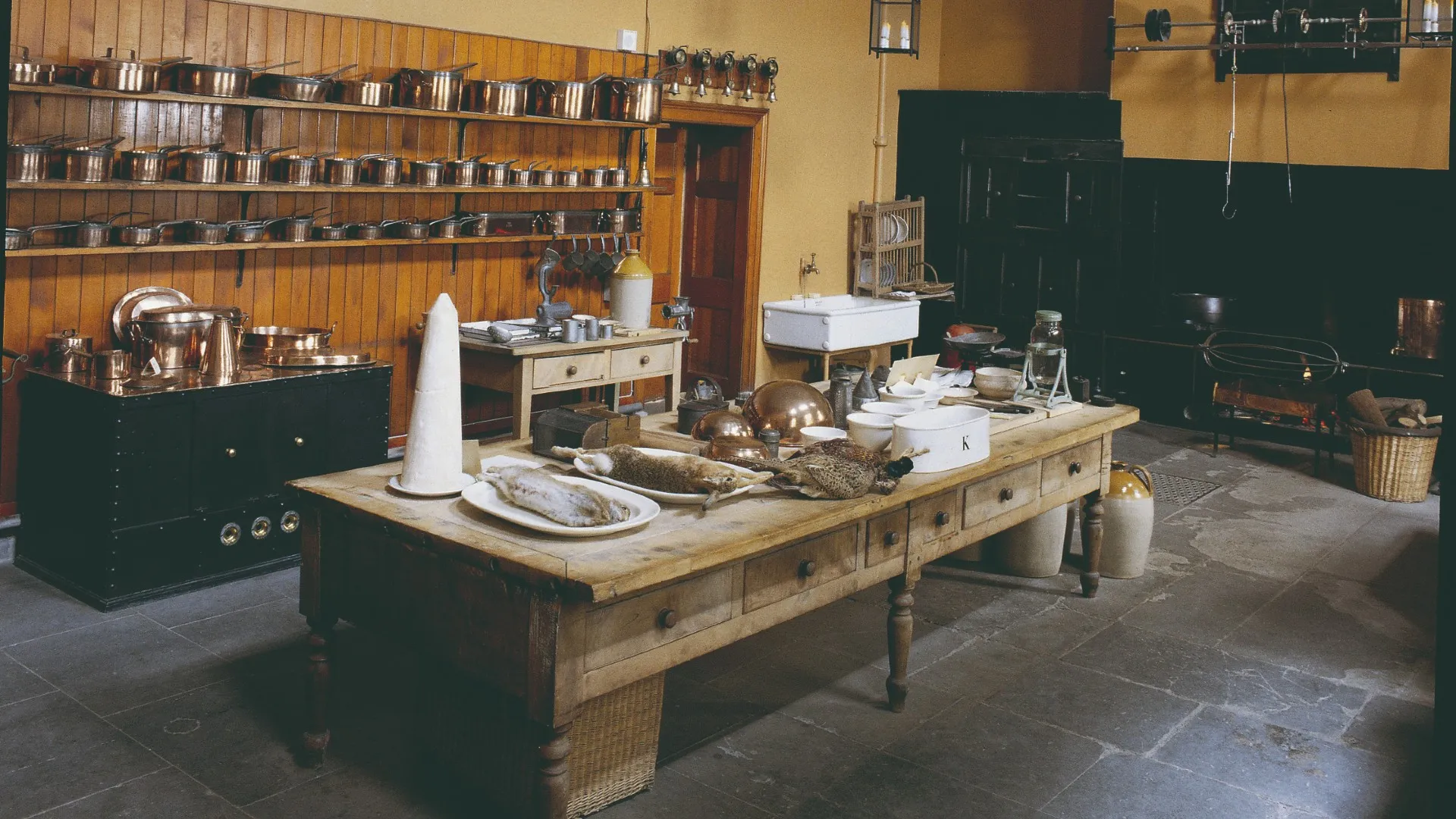
Bowhill House
(1) Historic Stove at Harewood House – This antique kitchen stove, located in the grand Harewood House, exemplifies the technological advancements of its time, highlighting the intricate design and functionality that supported large-scale culinary operations in historic estates.
(2) Victorian Kitchen at Bowhill House – The restored Victorian kitchen at Bowhill House showcases period-specific culinary practices, featuring original fixtures and cookware that reflect the estate’s rich history and the evolution of domestic service.
💡 The Industrial Revolution reshaped kitchen design, transitioning it from a hidden service area to an essential, technology-driven hub of the home.
Global Perspectives: Historic Kitchens Around the World
Across cultures, kitchens have been designed not just for cooking but for storytelling, ritual, and communal gatherings.
Asia: Precision & Harmony in Design
• Japan: Traditional kitchens revolved around the kamado, a clay or stone stove that symbolized harmony and seasonal cooking.
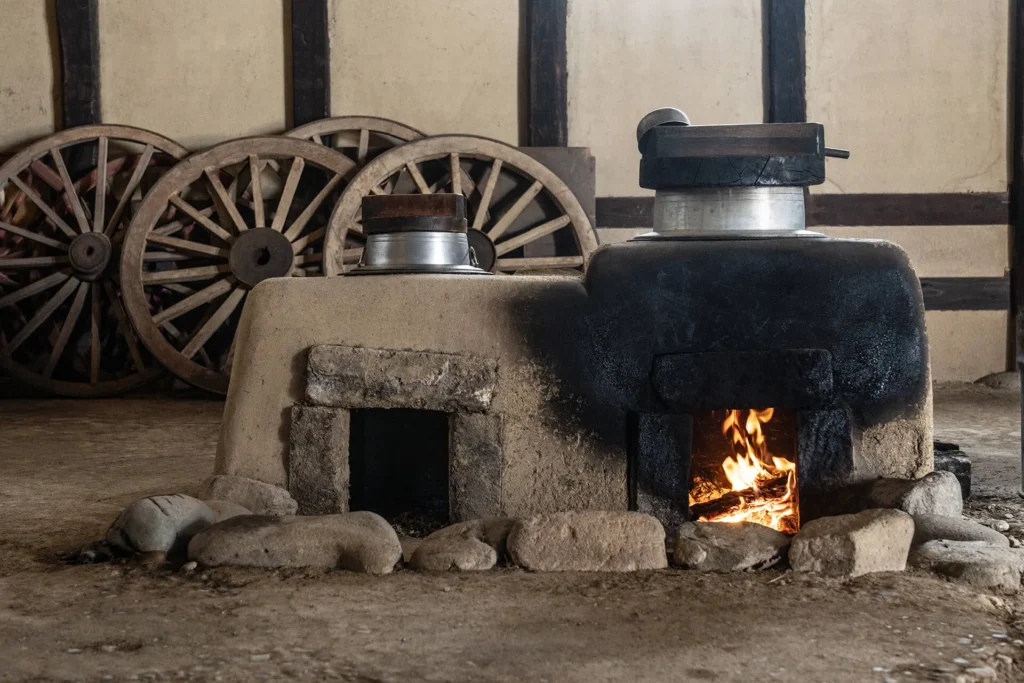
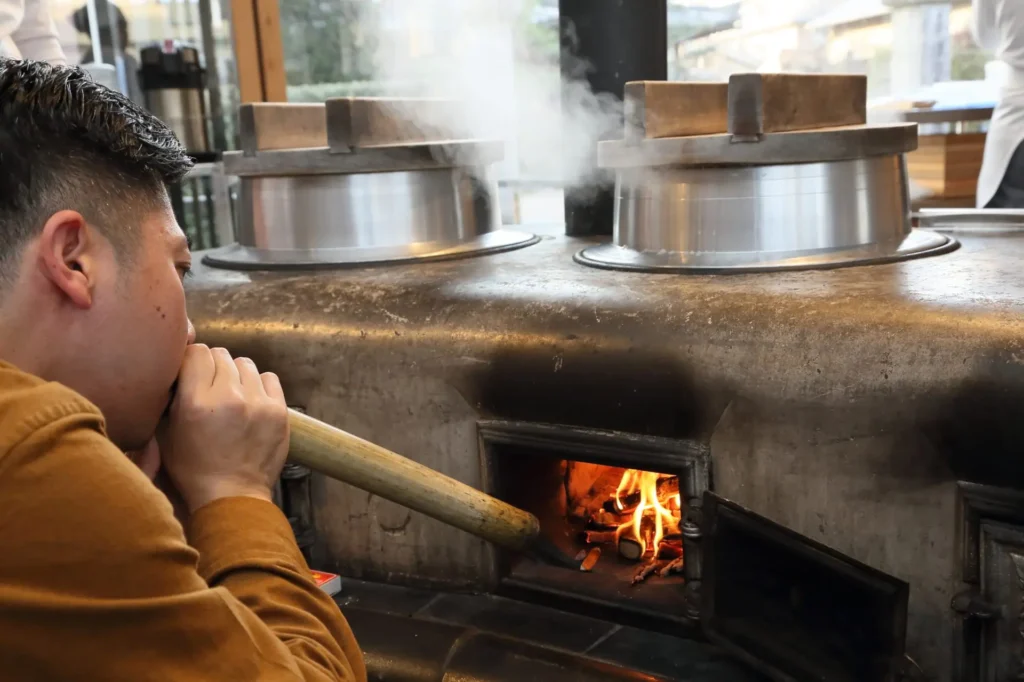
Japanese Kamado Stove – A cornerstone of traditional Japanese kitchens, the kamado is a clay or stone stove designed for slow, controlled cooking. Rooted in ancient techniques, it symbolizes harmony and seasonal cooking practices, influencing modern rice cookers.
• India: Royal kitchens centered on the tandoor, a cylindrical clay oven that imparted signature smoky flavors to breads and meats.
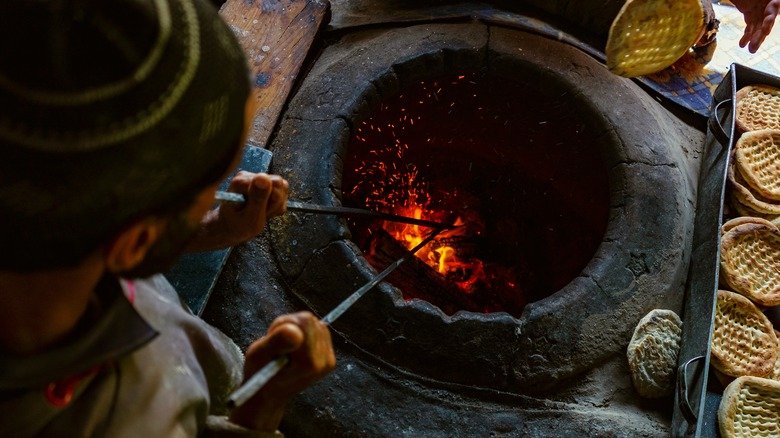
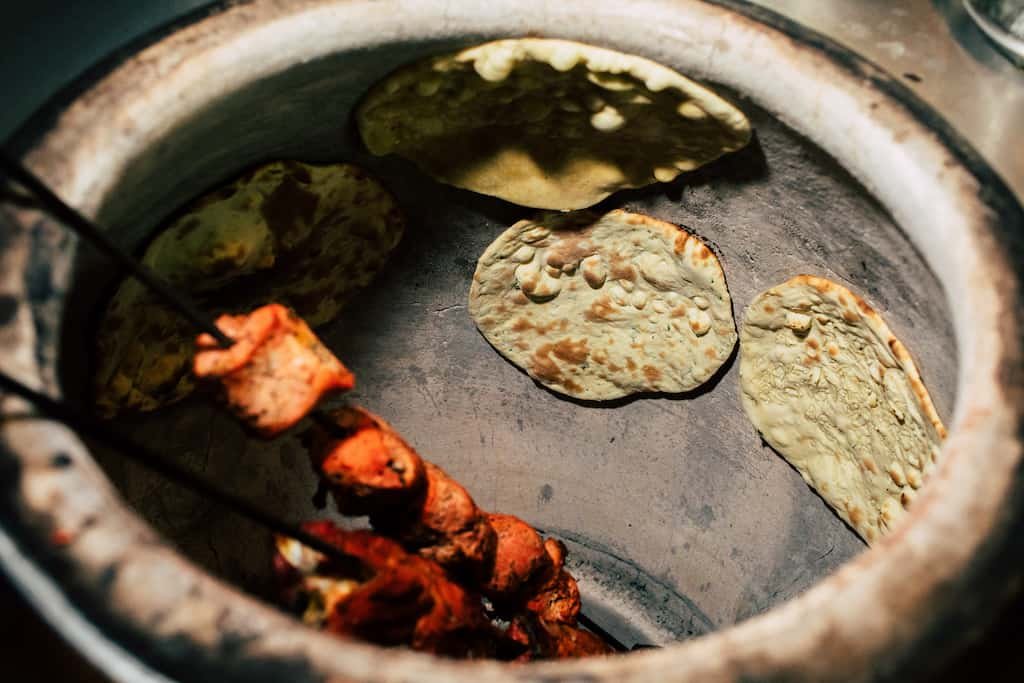
Indian Tandoor Oven – A vital part of royal and everyday kitchens in India, the tandoor is a cylindrical clay oven that imparts smoky flavors to breads, meats, and vegetables. Its high-heat cooking technique has been integral to South Asian cuisine for centuries.
Africa & The Middle East: Communal Cooking Spaces
• Morocco: The tagine, a conical clay vessel, doubled as both cookware and architectural design, preserving moisture for slow-cooked stews.
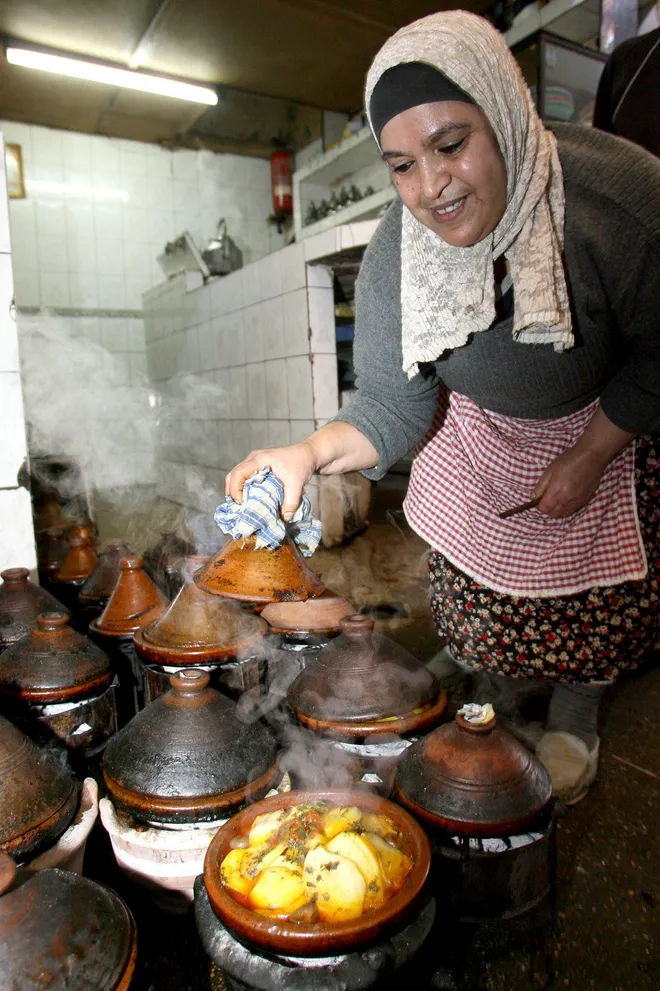
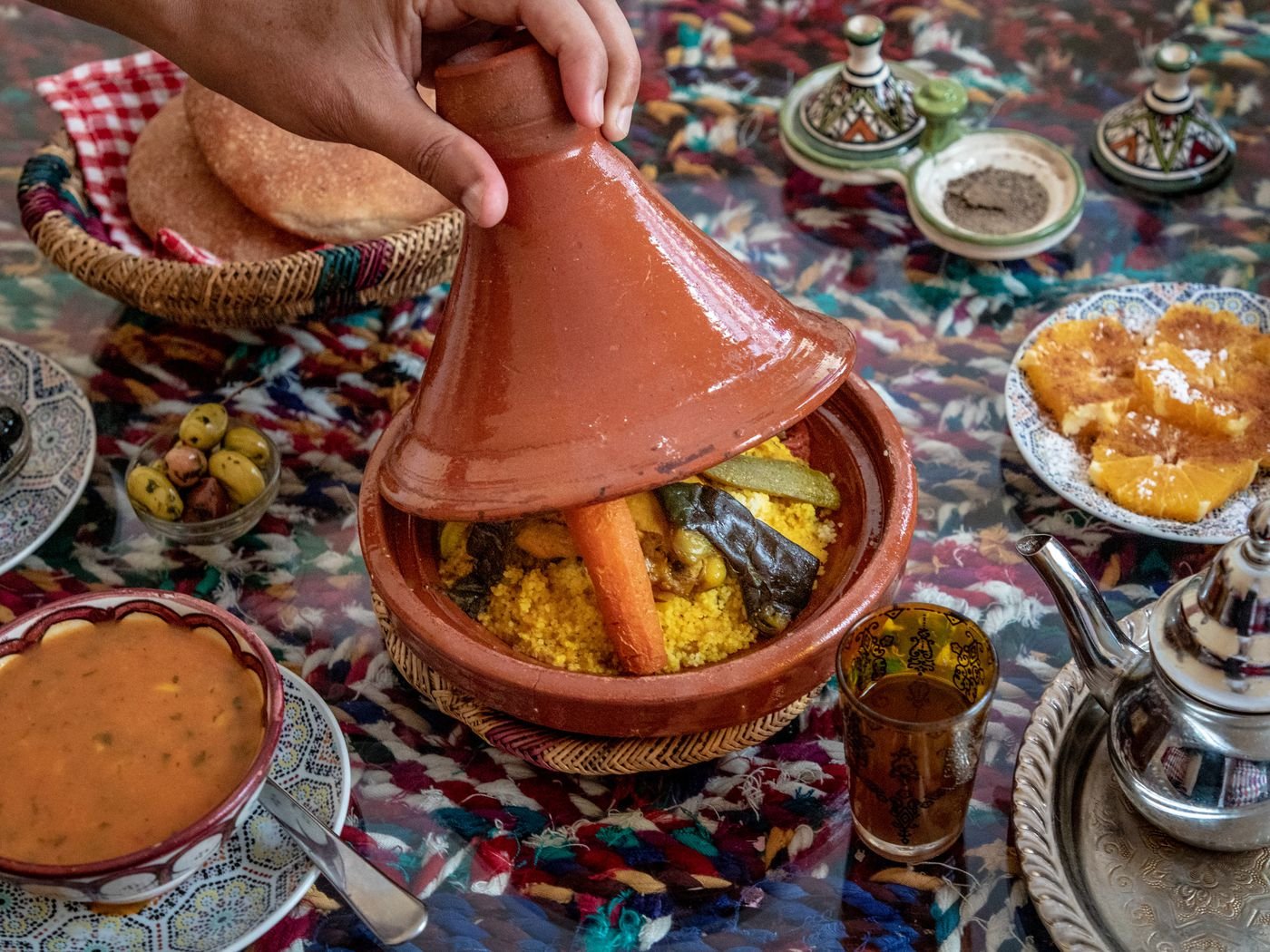
Tagine Cooking in Morocco – A staple of North African cuisine, the tagine’s conical design allows steam to circulate, locking in moisture and intensifying flavors. Used for slow-cooked stews, this traditional clay vessel embodies both function and cultural heritage.
• Middle Eastern Traditions: Open-hearth kitchens emphasized hospitality, where saffron-laced stews and slow-roasted meats were prepared for communal feasts.

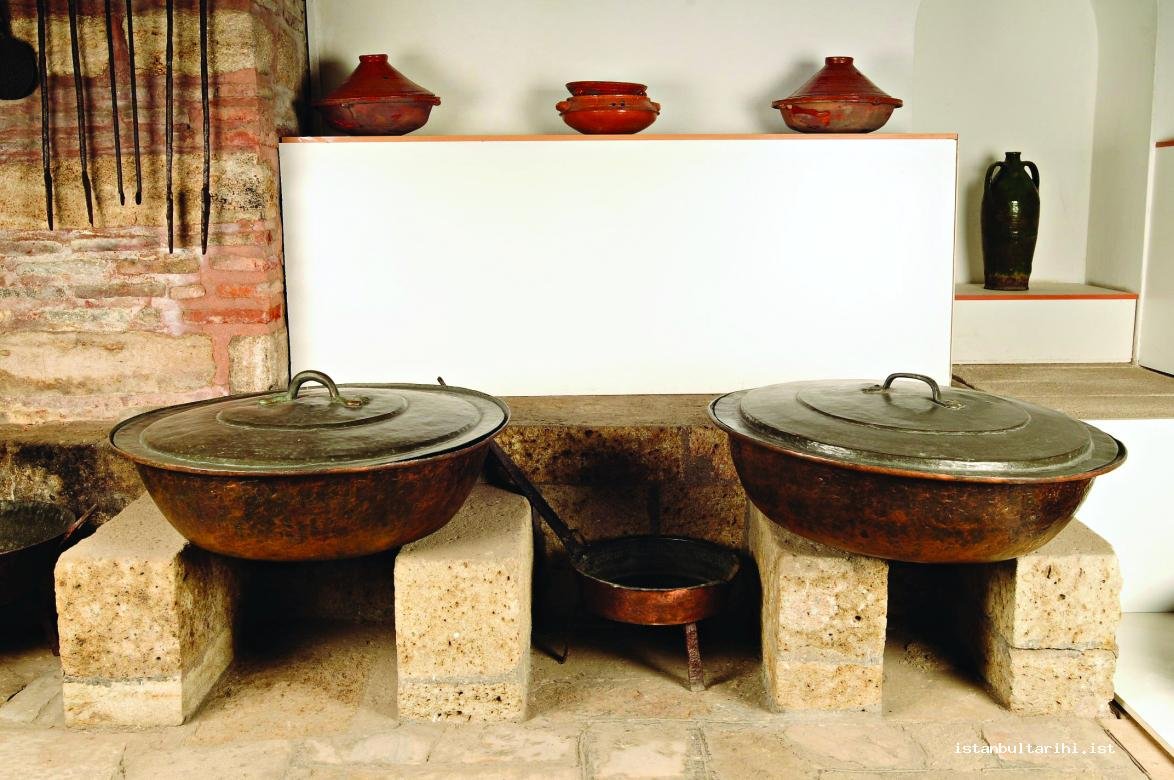
Ottoman Hearth Kitchen – Topkapi Palace, Turkey – This historic kitchen, located in Istanbul’s Topkapi Palace, showcases the grand culinary traditions of the Ottoman Empire. Large copper cauldrons were placed over stone hearths to prepare feasts for thousands, reflecting the scale and sophistication of palace cuisine. These kitchens played a vital role in shaping Middle Eastern and Mediterranean cooking techniques.
Europe: Rustic Elegance Meets Practicality
• French Châteaux: Towering fireplaces and expansive stone prep tables defined luxurious kitchen design.
• Scandinavia: Wood-fired ovens provided warmth and efficiency, baking dense breads and simmering stews in minimalist yet functional spaces.
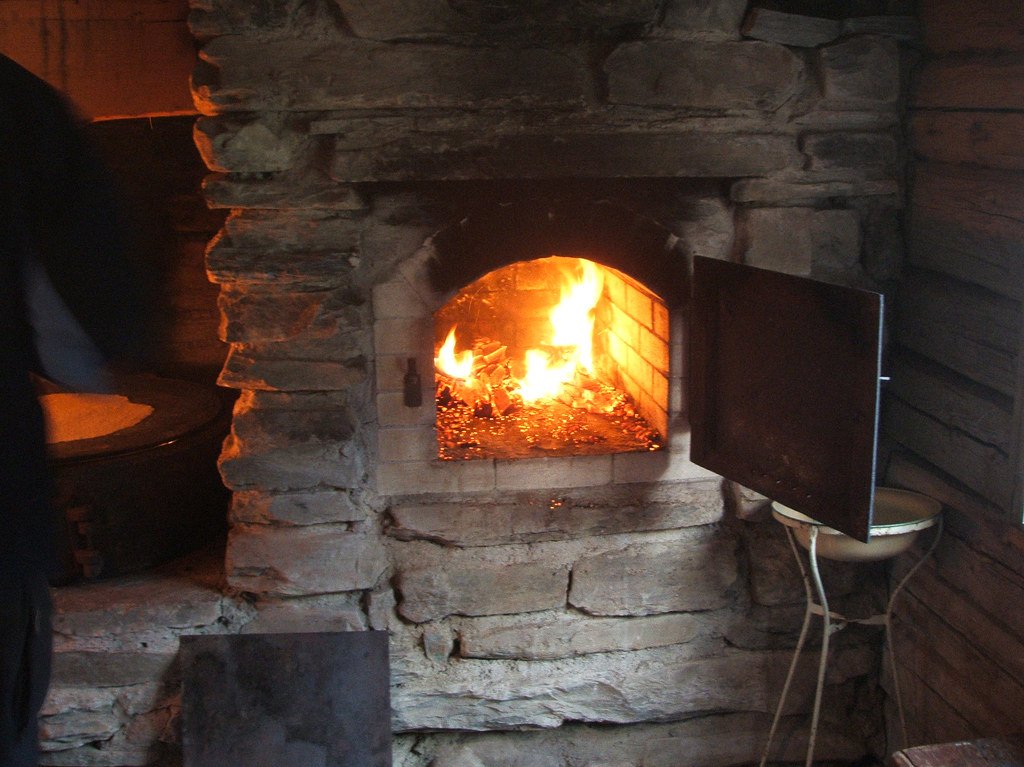
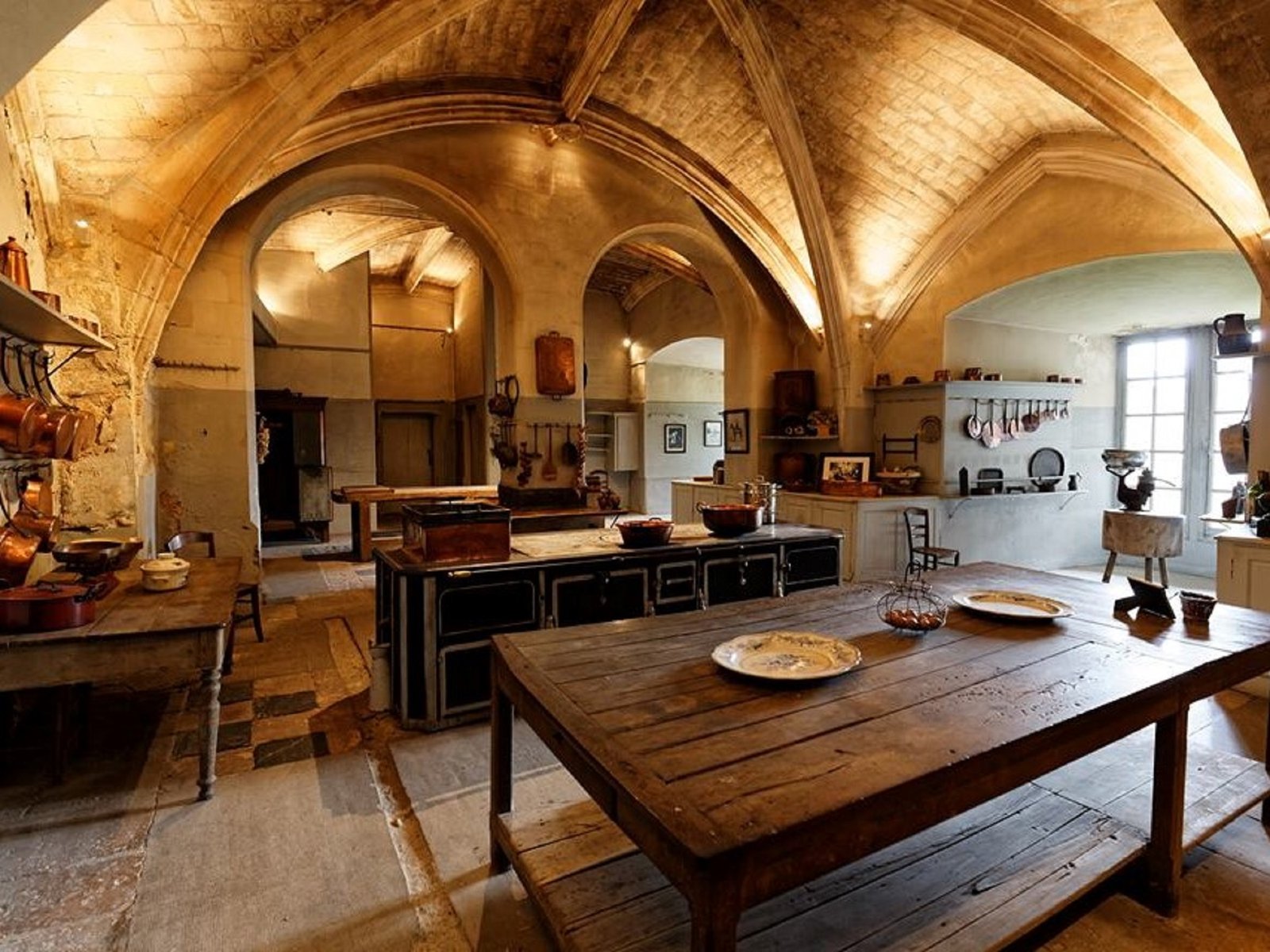
(1) Scandinavian Wood-Fired Oven – In Scandinavian kitchens, traditional wood-fired ovens were central to cooking and heating. These rustic yet efficient ovens were used for baking dense breads and slow-cooked stews, embracing a minimalist yet functional approach to food preparation.
(2) French Château Kitchen – Characterized by grand stone fireplaces, copper cookware, and expansive wooden prep tables, kitchens in French châteaux reflected both luxury and practicality. These spaces were designed for large-scale cooking, often serving lavish feasts for the nobility.
💡 Kitchens are more than cooking spaces—they are cultural artifacts, reflecting the traditions, craftsmanship, and social customs of their time.
Historic Kitchens, Modern Inspiration
Even today, elements of historic kitchen design continue to influence contemporary culinary spaces:
• Open Shelving & Hanging Pot Racks → Inspired by medieval and Renaissance kitchens.
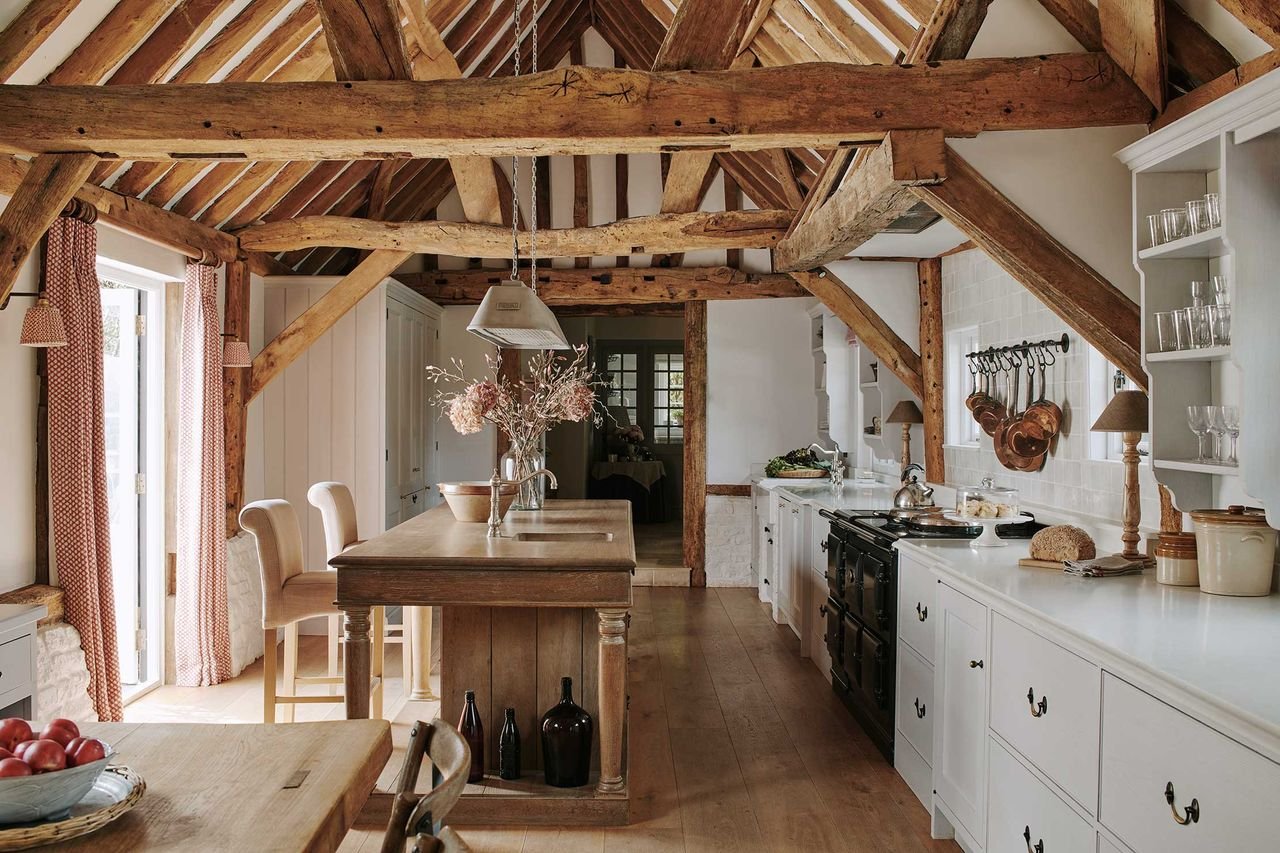
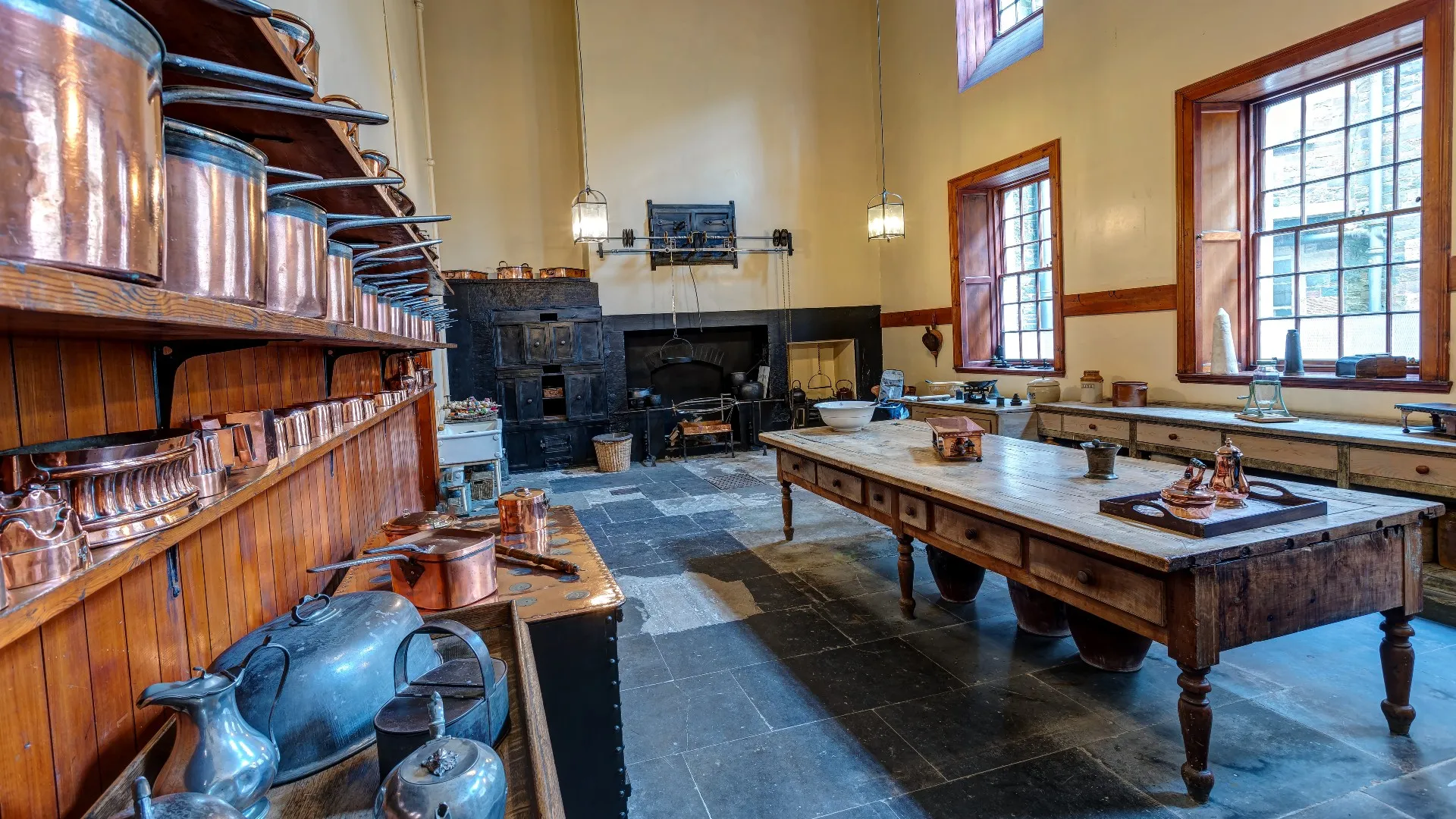
Historic Kitchen Storage & Organization – Open shelving and hanging pot racks, inspired by medieval and Renaissance kitchens, remain a staple in modern design. These elements reflect a long-standing tradition of accessibility and functionality, allowing cooks to store and display cookware efficiently while maintaining the warmth of historical craftsmanship.
• Kitchen Islands → A modern reinterpretation of estate kitchens’ central prep tables, now social gathering spaces.
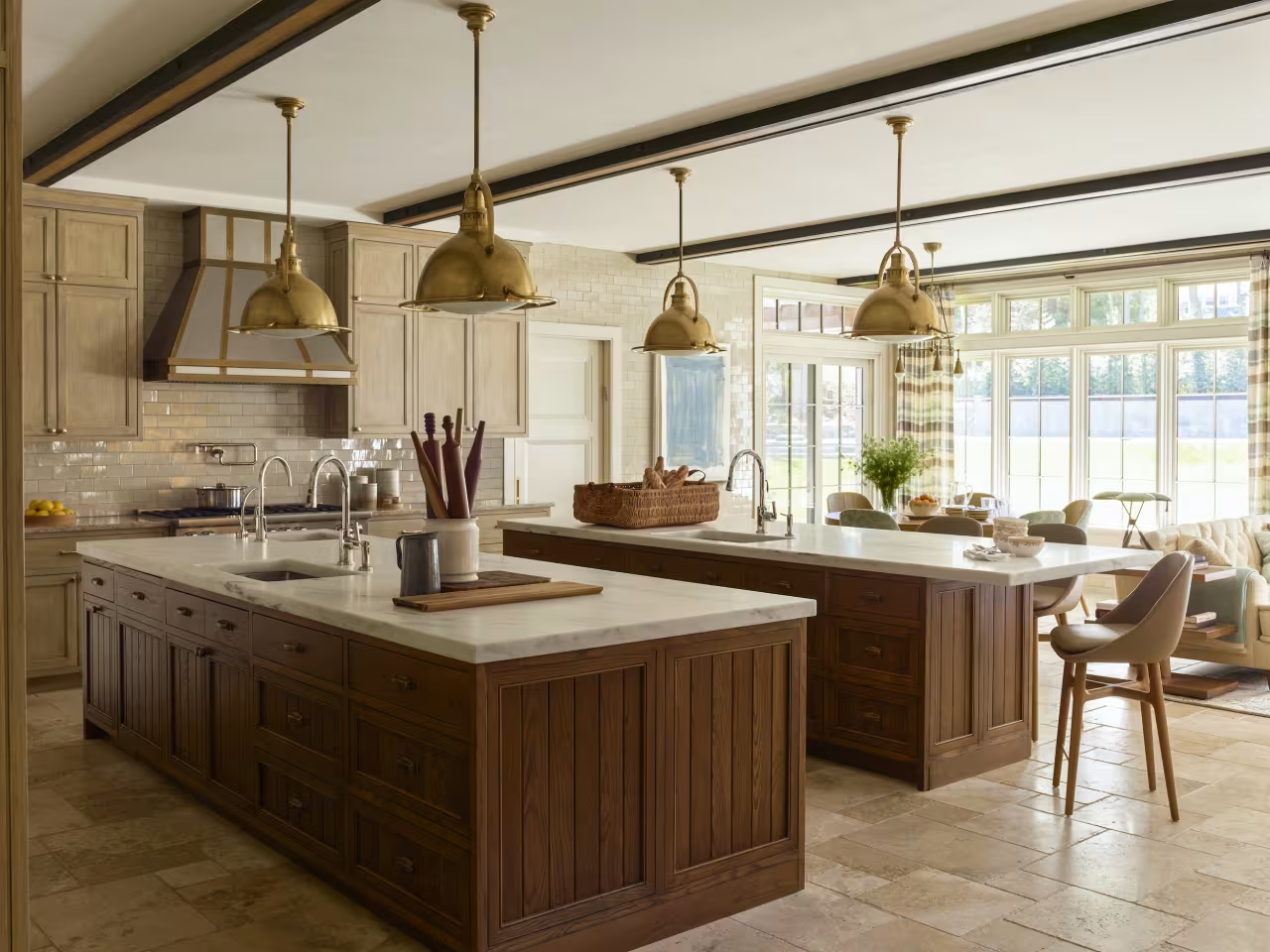
Modern Kitchen with Island
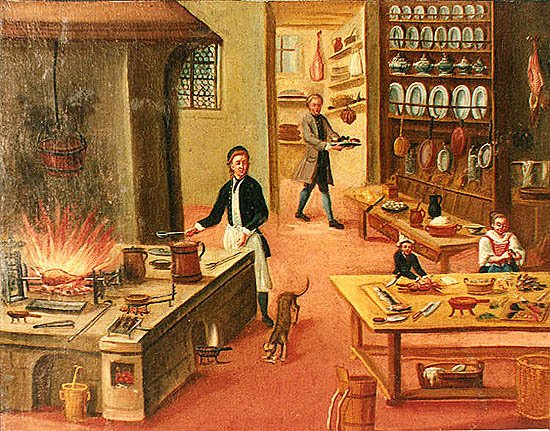
The Evolution of Kitchen Islands – Once functional worktables in grand estate kitchens, central prep tables have transformed into modern kitchen islands—blending efficiency with social interaction. Today’s islands echo the spacious, communal nature of historical kitchen design, serving as both a cooking and gathering space.
• Advanced Ventilation Systems → Evolved from ancient Roman chimney flues, improving air circulation and heat control.
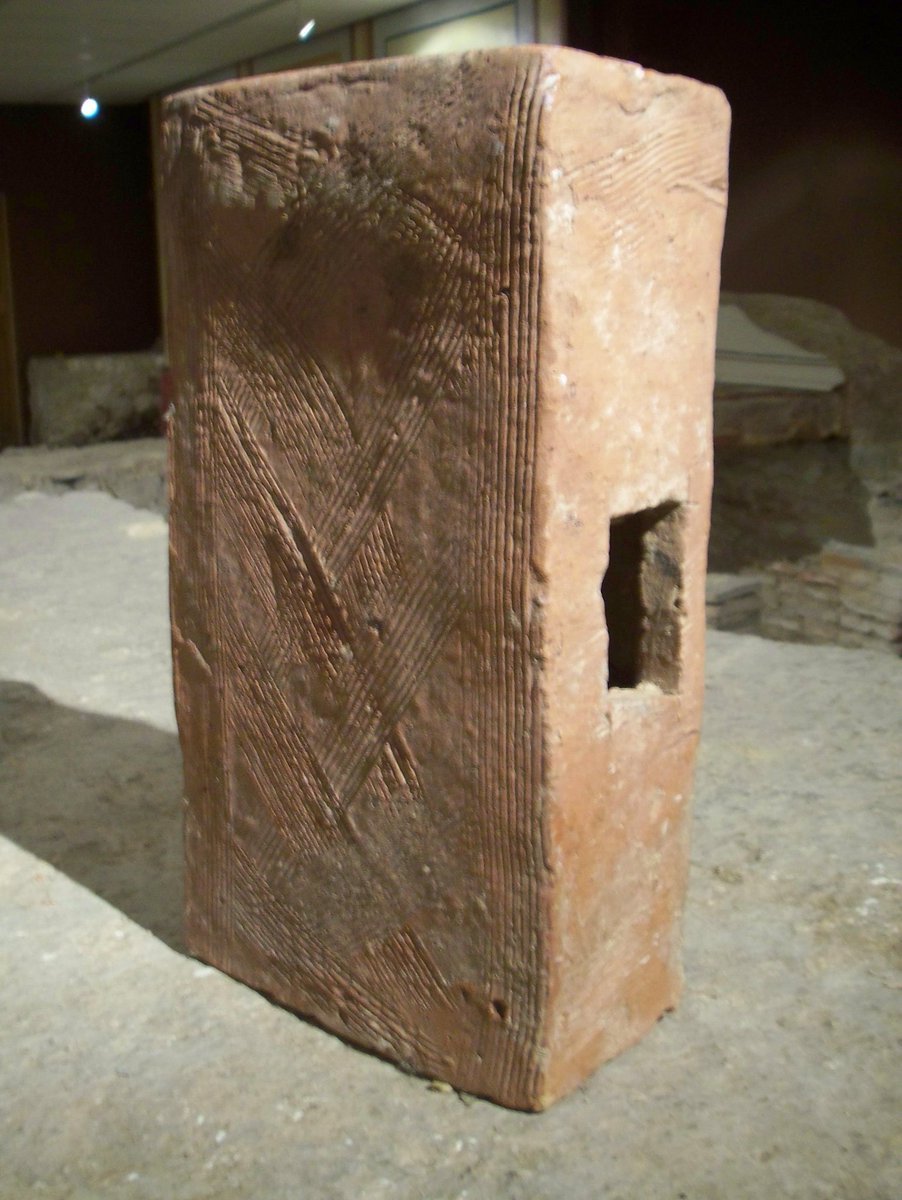
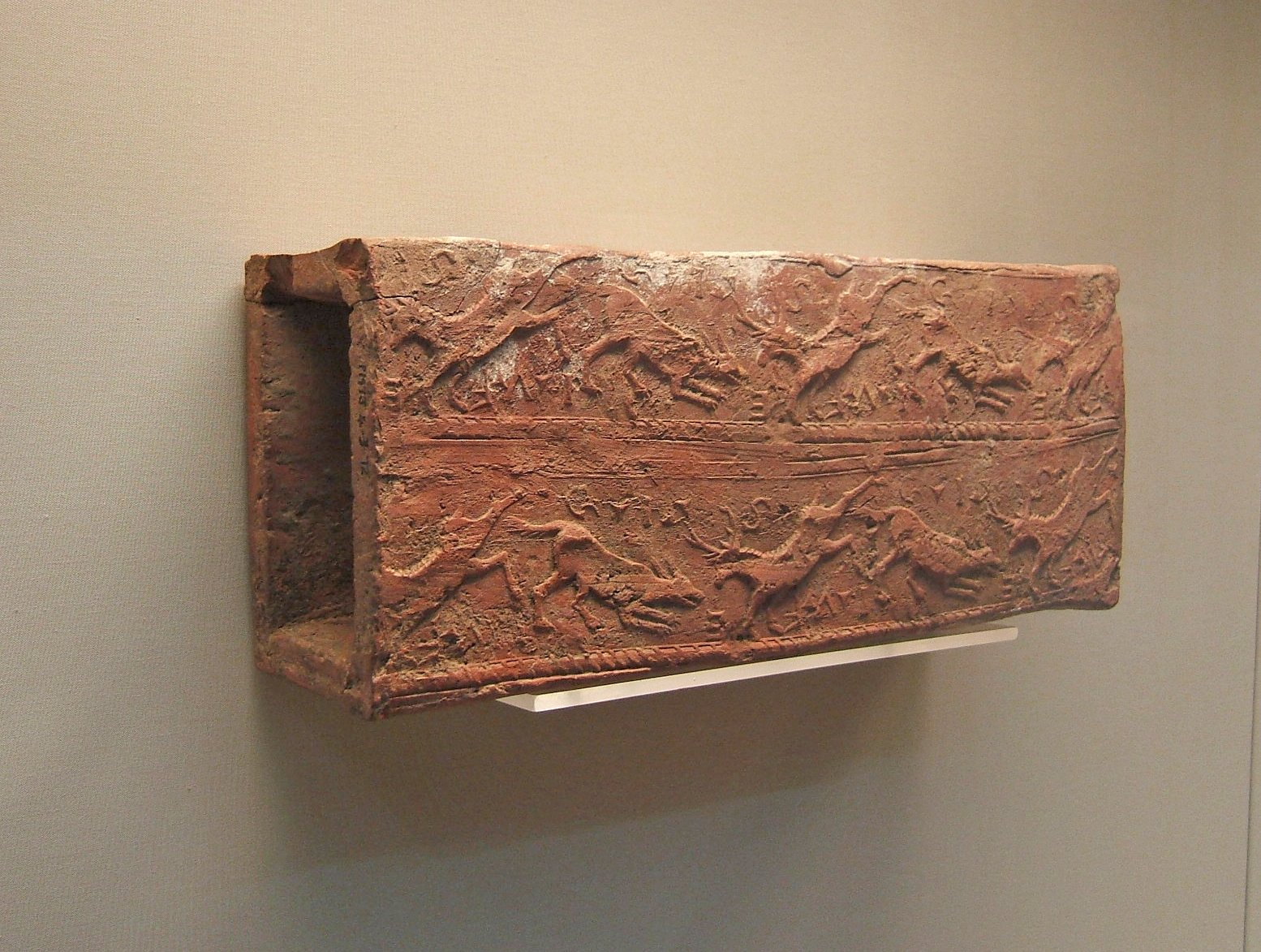
Ventilation Systems from Antiquity to Modern Kitchens – Ancient Roman chimney flues and open hearths laid the foundation for today’s advanced ventilation systems. These innovations improved air circulation and heat control, shaping the way contemporary kitchens manage airflow and temperature regulation.
💡 At Palette Synthi™, we honor how history shapes design—proving that every kitchen tells a story of innovation, tradition, and human ingenuity.
Which Historic Kitchen Speaks to You?
Are you drawn to the rustic warmth of a medieval hearth, the elegance of a Renaissance château, or the sleek efficiency of an early industrial kitchen?
Share your thoughts with #PaletteSynthi and join our Historic Kitchens Showcase, where we celebrate the spaces that have shaped the way we cook, gather, and share stories today.
Let’s uncover the kitchens that have preserved culinary legacies, shaped civilizations, and continue to define how we experience food.



